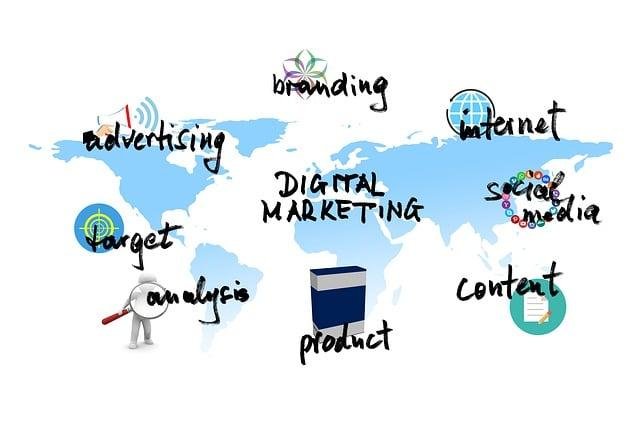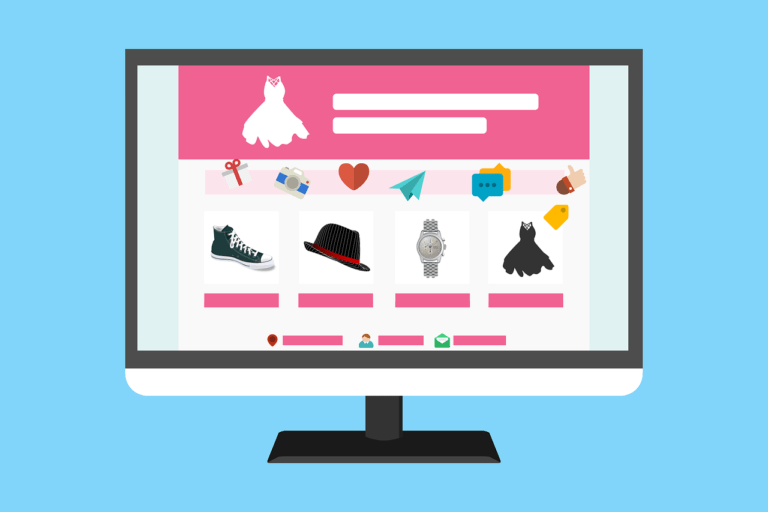Are you looking to make some extra money by selling digital products? If so, you’ve come to the right place.
We are here to teach you how to sell digital products online, from creating the product to marketing it to potential customers.
We will discuss the different types of digital products, the best platforms to sell on, and how to optimize your online store for maximum profits. So, let’s get started!
Table of Contents
Types of Digital Products
There are a variety of digital products that you can sell online. These include ebooks, music, videos, software, photographs, templates, etc. Each type of digital product has advantages and disadvantages, so it’s essential to consider which product is best for your business.
Ebooks are one of the most popular digital products. They are relatively inexpensive to produce and can be sold through various platforms.

Music and videos are also popular digital products, which can be sold through streaming services or downloads. On the other hand, the software can be expensive to produce and may require additional licensing fees.
Digital products such as photographs and templates are highly sought after by bloggers and digital marketers. These photographs are typically sold as stock photos or within a compilation. Templates can be used for web design or other creative projects.

Benefits of selling digital products
Digital products, such as software, ebooks, music, and videos, offer unique advantages over physical items in terms of cost and convenience. Some of these include:
Low Production Costs
One of the significant advantages of selling digital products is the low production costs. Unlike physical products, there is no need for manufacturing, packaging, or shipping charges. Businesses can create and sell digital products with minimal overhead expenses.
Low Distribution Costs
Another advantage of selling digital products is the low distribution costs. Digital products can be delivered instantly to customers over the Internet, eliminating the need for expensive shipping and handling costs.
It makes it easy for businesses to reach customers worldwide, reducing overhead costs and increasing profits.
Increased Reach and Visibility
Selling digital products can also help businesses increase their reach and visibility. Digital products like webinars, ebooks, and apps can be sold online, allowing companies to reach customers worldwide.
It can help them to expand their customer base and increase their profits. Selling digital products can help businesses build a solid online presence, driving more traffic to their website and increasing their visibility.

Flexible Pricing
Another benefit of selling digital products is that businesses can offer flexible pricing options to attract a broader range of customers, as they can provide a range of prices to suit different budgets.
Companies can use digital products to create subscription-based models, allowing customers to pay for digital product access regularly.
Quicker Time to Market
Selling digital products can help businesses reach the market faster than physical products. Unlike physical products, digital products do not require manufacturing, packaging, or shipping.
Companies can get their products to market much sooner, allowing them to capitalize on trends and capture more market share.
These are just a few of the benefits of selling digital products. Leveraging these advantages, businesses can maximize their profits and increase their reach and visibility.
How to Sell Digital Products Online
It’s essential to follow the proper steps and do your research. We’ve outlined the key steps you need to take to get started, from choosing the right platform to marketing and pricing your products.
Now, it’s time to start selling your digital products online.
Identify Your Target Audience
The first step in selling digital products online is understanding your target audience and their needs, wants, and values.
You’ll need to research your target audience’s demographics, psychographics, and market trends to do this. This research can be conducted through surveys, focus groups, interviews, and other methods.
Once you’ve identified your target audience, the next step is to establish a connection with them. It can be done through social media, email campaigns, and other marketing strategies.
Creating content that resonates with your target audience and is tailored to their needs and interests is essential. It helps you build a stronger relationship and establish trust between you and your customers.
Create a Digital Product
When brainstorming ideas for a digital product, you must focus on the product you want to create.
Consider what your customers find valuable and create something that solves a problem for them. Once you have a few ideas, you can start building your product.
You can use software like Adobe Creative Cloud or Canva to create digital products like ebooks, courses, webinars, etc.
Here are some of the best software solutions for creating a digital product. We will be exploring the features and benefits of each solution, as well as how they can help you create something truly unique and special.
Adobe Creative Cloud
Adobe Creative Cloud is one of the best software solutions for creating a digital product. It is a suite of applications and services that enables you to design and publish content in various formats. You can create logos, videos, animations, websites, and more with Adobe Creative Cloud.
It also offers various tools to help you manage the entire creative process from start to finish. With Creative Cloud, you can collaborate with other designers, share your work with the world, and access a wealth of resources to help you bring your ideas to life.
Autodesk Fusion 360
Autodesk Fusion 360 is another excellent software solution for creating a digital product. It is a cloud-based design, engineering, and manufacturing platform that provides a comprehensive set of tools for creating 3D models and prototypes.
With Fusion 360, you can quickly design and 3D print complex objects, simulate motion and dynamics and analyze structures.
The intuitive interface and comprehensive features make creating a product from concept to reality easy.
Sketch
It is powerful yet straightforward design software ideal for creating digital products. It provides a visual interface for designing websites, apps, and other digital products.
It also has powerful tools for prototyping, wireframing, and creating beautiful designs. With Sketch, you can easily create and export your designs in various formats and share them with the world.
Microsoft Powerpoint
Microsoft has provided many great software solutions for creating digital products. Powerpoint is one of them.
It is a presentation software that offers you a variety of tools for designing and delivering engaging presentations.
With PowerPoint, you can create stunning presentations that feature animations, videos, and other multimedia elements.
You can also collaborate with others, share your presentations with the world, and access a wealth of templates to help you get started.
Whether you’re looking for a comprehensive design platform like Adobe Creative Cloud or a simple presentation software like Microsoft PowerPoint, plenty of options are available to help you bring your ideas to life.
You can create something unique and special with the right tools and resources.
Choose a Platform
Once you have decided on the type of digital product you want, you must choose a platform to sell it.
Several outlets are available, including online marketplaces, e-commerce websites, and self-hosted solutions.
Each forum has advantages and disadvantages, so it’s essential to consider which is best for your business.

You can create a simple website for selling digital products online. It should be professional, easy to navigate, and secure. You should also make sure that it is optimized for mobile devices. You can use a website builder such as Wix or Squarespace to create your website.
Online marketplaces like Amazon, Etsy, and eBay are great for selling digital products. They have a large customer base and offer easy payment processing. However, they also take a percentage of your sales as a fee.
E-commerce websites like Shopify or BigCommerce are great for selling digital products. They offer a range of features, such as integrated payment processing and customizable themes. They also provide a variety of tools for marketing and promotion. However, they can be pretty expensive.
Self-hosted solutions, such as WordPress, are great for selling digital products. They offer a range of features, such as integrated payment processing and customizable themes. They also provide a variety of tools for marketing and promotion. However, they require more technical knowledge than other platforms.
Optimizing Your Store
Once you have chosen a platform, you must optimize your store for maximum profits.
Optimizing includes creating attractive product pages, setting up a payment system, and offering discounts and promotions. It helps to consider offering customer support and detailed product descriptions.
Product pages should be designed with the customer in mind. They should be easy to navigate and contain detailed product descriptions.
They should also have attractive images, detailed pricing information, and customer reviews.
You should also set up a payment system that is secure and reliable. It will help you to process payments quickly and securely.
It would help if you also offered discounts and promotions to encourage customers to buy your digital products.
Price Your Product
Pricing your digital product is one of the most important decisions to prepare it for the market. It’s critical to ensure that you set a price that reflects the value of your product and allows you to make a profit.
When setting a price, there are several factors to consider. Research similar products and see what fees they are charging so you can make sure your price is competitive.
It would help if you also considered the cost of production. If a product is expensive, you may need to charge more to make a profit.
If you have a unique product that offers more value than other products in the market, you may be able to charge more for it.
Ultimately, pricing is a balancing act, and it’s essential to find a balance between the cost of production, the value of your product, and the market price of similar offerings.
Marketing Your Digital Products
Once you have optimized your store, you must start marketing your digital products. This includes creating content, engaging with customers, and optimizing for search engines.
Creating content that resonates with your target audience is critical to selling digital products online. This includes creating compelling copy, visuals, and videos tailored to your target audience’s needs and interests.
You should also create optimized content for search engines, as this will help drive more traffic to your store. It would be best if you optimized your store for search engines. This includes optimizing your product pages, titles, descriptions, and URLs. Use keywords in your content and backlinks to your store.
Engaging with customers is also essential. You should respond to customer inquiries and feedback promptly. It would be best to consider offering rewards and loyalty programs to encourage customers to purchase your digital products.
Utilize Social Media
Use social media to promote your digital products. Post about your products regularly, and include a link to your website or shop. You can also use social media ads to reach more people and increase sales.

Social media isn’t just about promoting digital products and building relationships with followers.
Take the time to respond to comments, answer questions, and converse with your followers. This act builds trust and shows followers that you care about their opinions.
Also, it’s essential to monitor and analyze your social media performance. By tracking your routine, you can see what kind of content resonates with your followers and what isn’t.
Leveraging the power of social media to promote your digital products can help you reach more customers, increase your brand awareness, and boost revenue.
Offer Discounts and Promotions
By creating incentives, you can encourage customers to buy your products, thus increasing the total amount of sales you make.
The first thing you need to do when offering discounts and promotions is to determine the type of discounts or promotions you want.
- Do you want to offer a percentage off for purchases made within a specific time frame?
- Will you offer a buy-one-get-one-free deal?
- Or, will you offer a flat rate discount for specific products?
Once you decide on the type of promotion, you can then start creating the necessary materials to inform customers about your deals.
Next, you’ll want to consider how to promote your discount and promotions. Will you use email, social media, or other online methods?
Or will you use physical marketing materials such as flyers, brochures, and posters?
You’ll need to figure out the best way to reach your target audience to maximize the success of your promotions.
Once you have everything in place, you’ll want to ensure that you track your results. You’ll want to know how many people are taking advantage of your promotions and how much money you make from each advertisement. It will help you determine if the ad was successful and if it is worth doing again.
You’ll need to monitor your competitors to see what discounts and promotions they offer. It will help you stay competitive and give you ideas for your advertisements.
Offering discounts and promotions is a great way to boost sales of your digital products. By creating incentives for customers to purchase your products, you can increase the total number of sales you make.
With the correct type of promotions and marketing strategies, you can maximize the success of your promotions and increase your profits.
Monitor Your Results
Monitoring and measuring the success of your digital product is essential in understanding how your audience engages with it and what needs to be improved or changed.
It’s necessary to identify what works and doesn’t to ensure that your product meets your users’ needs. It would help if you tracked vital metrics to understand your product’s success better.
Look at the usage metrics.
How often is your product used, and how long are people using it?
It will give you an idea of how engaging your product is and how loyal your user base is.
It’s also important to look at the conversion rate – how many people who start using the product buy something from it?

Make sure to track customer satisfaction.
It can be done using surveys or other feedback forms to understand how people feel about your product and what areas need improvement.
It’s essential to measure the impact of your product – how much it’s changing your users’ lives or helping them achieve their goals.
It will give you an understanding of the overall success of your product and how you can continue to improve it.
By taking the time to track and measure your digital product’s success, you’ll get a clear picture of how it’s performing and what improvements need to be made.
Frequently Asked Questions?
Q: What are the popular platforms for selling digital products online?
A: Some popular platforms for selling digital products online include Etsy, Amazon Kindle Direct Publishing, and Gumroad.
Etsy is a popular platform for selling handmade and vintage items, but it also allows users to sell digital products. Etsy allows sellers to create and upload digital products, such as artwork, music, and videos. It also supports instant downloads so that customers can make their purchases immediately. Etsy also has a range of customizable options, such as creating discount codes, adding taxes and shipping costs, and more.
Amazon Kindle Direct Publishing (KDP) is Amazon’s self-publishing platform. It allows authors, publishers, and entrepreneurs to easily create and sell digital products such as ebooks, audiobooks, and other digital products. KDP is a great way to start selling digital products online, as it is easy to set up and use.
Gumroad is a platform that specializes in selling digital products. It allows users to upload digital products, such as music, videos, ebooks, and more and supports instant downloads. Gumroad also offers a range of features, such as the ability to create discount codes, integrated analytics, and more. It’s an excellent platform for selling digital products without building a website.
Q: How do I set up an account to sell digital products on Etsy?
A: It’s surprisingly easy to get your Etsy shop up and running, and you can start selling your digital products in no time. To begin, all you need to do is go to Etsy.com and click on the “Sell on Etsy” link at the top of the page. From there, you’ll be prompted to create an account.
First, you’ll be asked to choose a username and password. Once you’ve done this, you’ll be directed to a page to enter the details of your shop, such as the shop name, location, language, currency, and payment methods.
After you’ve filled out this information, you’ll be ready to start listing your digital products. You can click the “List Your Digital Products” button. On this page, you’ll be able to upload your digital products, add descriptions, and set prices.
Once you’re done with this step, you’ll be ready to start selling! Etsy provides plenty of resources to help you promote your products and get the most out of your shop. Good luck and happy selling!
Q. What are the benefits of using Amazon Kindle Direct Publishing?
A: There are many benefits to using Amazon Kindle Direct Publishing (KDP) to sell digital products online. One of the main benefits is that it is straightforward to use. KDP has a simple user interface that makes setting up and managing digital products easy. Additionally, it is an excellent platform for selling digital products as it has a large pool of potential customers. Amazon’s customer base is extensive, and by using KDP, you can tap into this customer base and reach more buyers.
Q: How do I price my digital products?
A: Pricing your digital products can be tricky, as there is no standard. Some factors to consider when pricing your digital products include the value of the product, your target audience, and the prices of similar products.
Q: How do I promote my digital products online?
A: There are many ways to promote your digital products online, including social media, email marketing, and paid advertising. You can also reach out to influencers and bloggers in your niche to see if they would be interested in promoting your products.
Q: How do I handle customer support for my digital products?
A: Customer support for digital products can be handled through email or a customer support platform. Responding to customer inquiries promptly and providing clear instructions for using the product is essential.
Q: What are some tips for creating high-quality digital products?
A: Some tips for creating high-quality digital products include: understanding your target audience, providing precise and detailed instructions, and testing the product thoroughly before release. Additionally, making sure the product is visually pleasing and easy to use, providing additional support materials such as videos and tutorials.
Conclusion
Selling digital products online can be a great way to make extra money. This guide has provided an overview of the different aspects of selling digital products online, from creating the product to marketing it to potential customers.
We have discussed the different types of digital products, the best platforms to sell on, and how to optimize your online store for maximum profits. We have also discussed how to market your digital products to potential customers. By following these steps, you can successfully sell digital products online.







